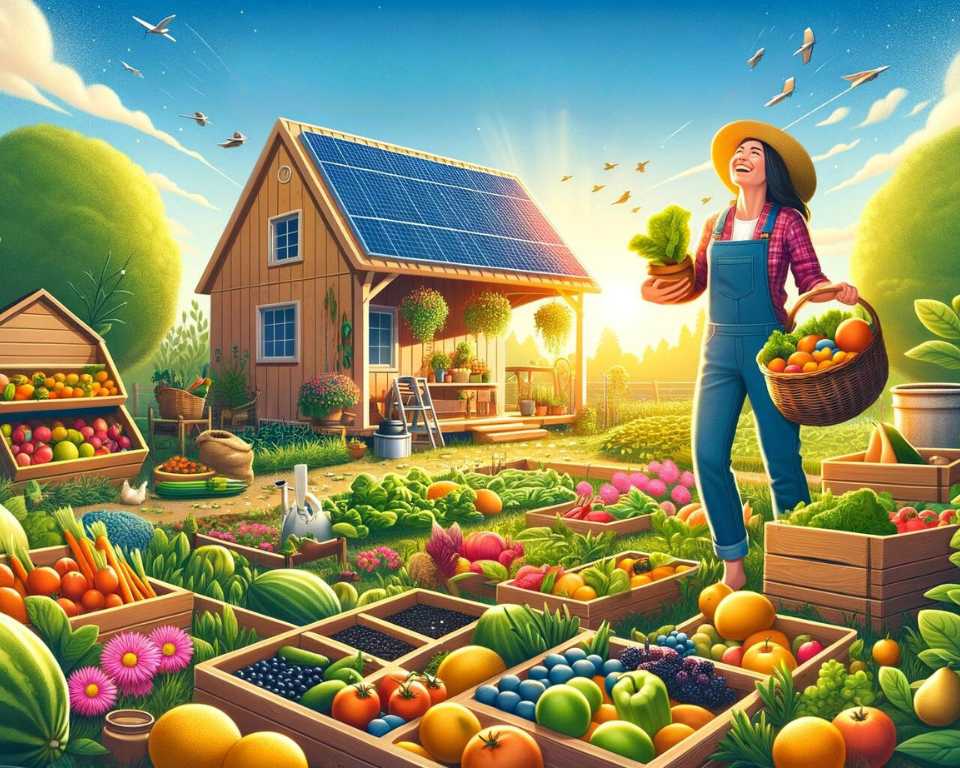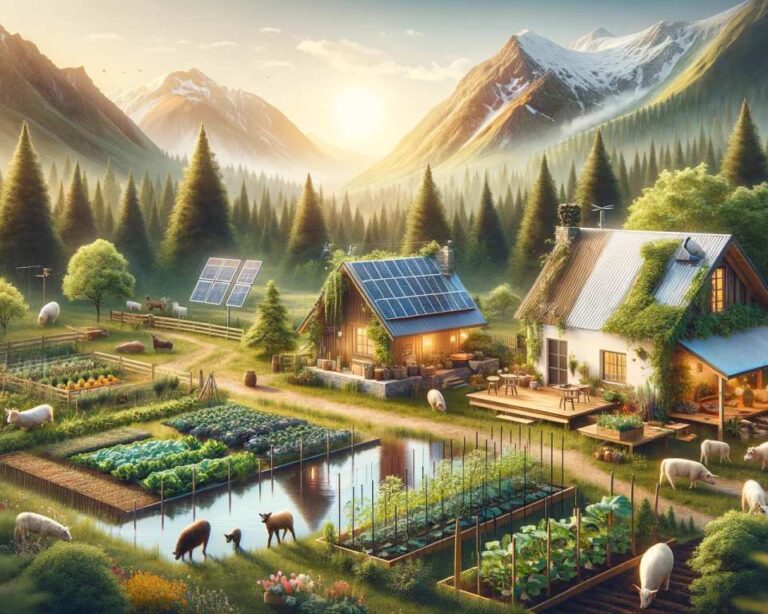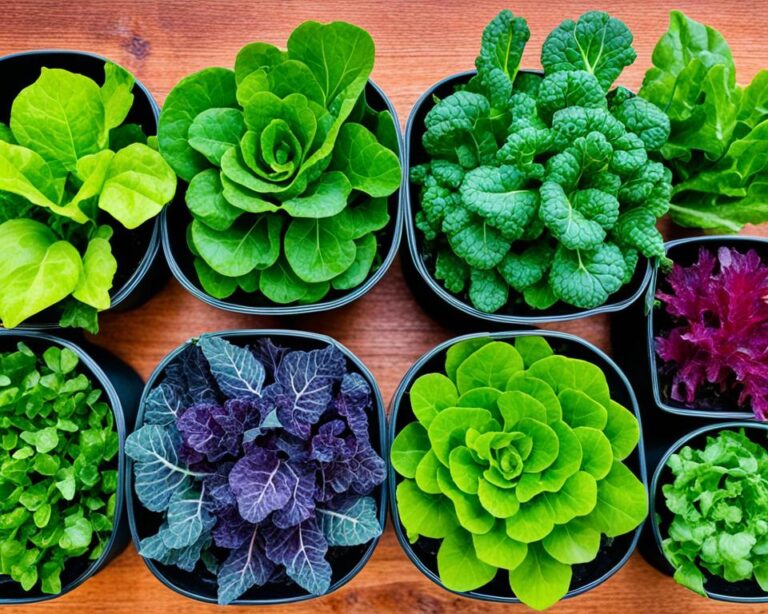Getting Started with Homesteading: A Beginner’s Guide
Welcome to our beginner’s guide to starting homesteading! Whether you’ve been dreaming about a self-sufficient lifestyle or want to live closer to nature, we’re here to help you embark on your homesteading journey. Homesteading can be practiced on any scale, from small urban homesteads to larger rural properties. By planning, setting goals, and developing essential skills, you can turn your homesteading ideas into a rewarding reality.
As homesteading for beginners, it’s important to have a solid foundation of knowledge and resources. In this comprehensive guide, we’ll provide you with essential homesteading tips, insights into the homesteading lifestyle, and valuable homesteading resources. Whether you’re interested in learning homesteading skills like gardening or raising livestock, this guide will set you on the path to success.
Throughout this journey, we’ll explore the steps to start homesteading, find suitable land, and delve into common homesteading activities. We’ll also uncover the history of homesteading and shed light on the possibility of acquiring free land. Regardless of your property size, whether you’re starting small in an urban area or have access to larger acreage, there are ways to embrace the homesteading lifestyle.
So, let’s dive in and discover the wonders of homesteading together. We’re excited to share this guide with you so that you can experience the joy and fulfillment that comes from living a self-sustaining, closer-to-nature lifestyle. Let’s embark on this homesteading adventure and make your homesteading dreams a reality!
What Is a Homestead?
A homestead is a lifestyle centered around self-sufficiency, small-scale farming, and sustainable living techniques. Homesteading can be practiced in both rural and urban settings, making it accessible to a wide range of individuals seeking a more intentional and sustainable lifestyle.
At its core, homesteading involves owning land and utilizing it to meet your basic needs, reducing reliance on outside sources. This includes practices such as growing your own food through gardening, raising livestock for food and other products like milk or eggs, and implementing sustainable living techniques to minimize waste and energy consumption.
Homesteading cultivates a deep sense of self-sufficiency, allowing individuals and families to have a closer connection with nature and their surrounding environment. It is a way of life that encourages autonomy and provides a fulfilling and purposeful existence.
“Homesteading is not just about where you live; it’s about how you live. It’s a journey towards a more intentional and sustainable lifestyle.”
Urban homesteading is a variation of this lifestyle, adapted to fit the constraints of city living. It involves maximizing space and resources to grow food, raise animals (such as chickens or bees), and practice sustainable living techniques like composting and rainwater harvesting. Urban homesteaders often find creative ways to utilize available space, such as container gardening on balconies or rooftops.
By embracing homesteading principles, individuals can gain greater control over their food supply, reduce their ecological footprint, and embrace a more frugal, self-reliant lifestyle. Whether practiced on a small urban plot or a larger rural property, homesteading offers a pathway to a more sustainable and fulfilling life.
Why Start Homesteading?
If you’re considering a change in lifestyle, homesteading offers a wealth of benefits. From self-sufficiency to a closer connection with nature, there are compelling reasons to embark on this rewarding journey.
By embracing homesteading, we make deliberate lifestyle choices that prioritize self-reliance and sustainability.
Homesteading allows us to break free from the constraints of modern living and regain control over our lives. Here are some key reasons to start homesteading:
- Self-Sufficiency: Homesteading empowers us to produce our own food, energy, and resources. By cultivating a self-sufficient lifestyle, we become less reliant on external systems, reducing our ecological footprint and gaining a sense of independence.
- Closer Connection to Nature: Living closer to nature is a fundamental aspect of homesteading. By immersing ourselves in the natural world, we reconnect with the cycles of life and develop a greater appreciation for the environment.
- Cost-Cutting: Homesteading can significantly reduce our financial burden. From growing our own organic produce to implementing energy-efficient systems, we can save money on groceries, utility bills, and other expenses.
- Developing Valuable Skills: Homesteading provides abundant opportunities for skill development. From honing our gardening techniques to learning how to preserve food and create handmade crafts, we acquire valuable knowledge that can benefit us throughout our lives.

Embarking on a homesteading journey offers a more fulfilling and sustainable way of life. It allows us to reclaim our connection with nature, develop self-reliance, and acquire skills that contribute to our well-being and the well-being of the planet.
Steps to Start Homesteading
Starting homesteading is an exciting journey that requires careful planning, goal-setting, and acquiring essential skills. Follow these steps to begin your homesteading adventure:
- Consider the day-to-day activities: Before diving into homesteading, take some time to envision and understand the day-to-day activities involved. This includes tending to crops, taking care of animals, and maintaining your homestead. Assess your time commitment and ensure it aligns with your lifestyle.
- Discuss your intentions: Homesteading often involves the entire family or a partner. Have open and honest discussions with your loved ones about your intentions. Make sure everyone is on board and willing to contribute to the homesteading lifestyle.
- Research and acquire necessary skills: Homesteading requires a diverse set of skills. Start by focusing on areas that interest you the most, such as gardening, raising livestock, or food preservation. Take advantage of online resources, books, and workshops to acquire the knowledge and techniques necessary for success.
Homesteading is a journey that requires patience, perseverance, and continuous learning. Embrace the process of acquiring new skills and enjoy the rewards of a self-reliant lifestyle.
By following these steps, you’ll be well on your way to starting your homesteading dream. Keep in mind that homesteading is a personal journey, and your path may look different from others. Take your time, set realistic goals, and enjoy the process of building a sustainable and fulfilling homestead.
Finding Land for a Homestead
When it comes to finding the perfect land for your homestead, there are several factors to consider. Whether you dream of sprawling acreage in a rural setting or prefer the opportunities of urban homesteading, your goals and preferences will guide your search.
One important aspect to consider is water access. Adequate water sources are essential for sustaining your homestead, whether it’s for irrigation, livestock, or household use. Be sure to research the water availability on the land you’re considering and determine if it aligns with your requirements.
Another crucial factor is the quality of the soil. The fertility of the land will play a significant role in your ability to grow crops and have a successful garden. Conduct soil tests or consult with professionals to assess the soil quality and determine if it’s suitable for your specific farming needs.
Community support is also worth considering, especially if you’re planning to engage in urban homesteading. Look for neighborhoods or areas that embrace sustainable living practices and have a supportive network of like-minded individuals. This can provide valuable resources, knowledge, and a sense of belonging.

Before making any decisions, thoroughly research the real estate options available to you. Real estate agents who specialize in rural or urban properties can be valuable guides. Their expertise will help you navigate the market and find the ideal piece of land for your homestead.
Factors to Consider in Your Land Search
- Size of the property and the desired acreage
- Proximity to essential amenities such as schools, hospitals, and grocery stores
- Availability of renewable energy sources like solar or wind
- Potential for future expansion or diversification of your homesteading activities
Remember, finding the perfect land for your homestead may take time and careful consideration. It’s essential to approach the search with patience, research, and expert guidance. Once you’ve found the right piece of land, you’ll be well on your way to realizing your homesteading dreams.
Common Homesteading Activities
Homesteading offers a wide range of activities that promote self-sufficiency and a closer connection to nature. Engaging in these activities not only supports a sustainable lifestyle but also provides a sense of fulfillment. Here are some common homesteading activities to explore:
Gardening
Gardening is at the heart of homesteading. It allows you to grow your own fruits, vegetables, and herbs, ensuring a fresh and organic food source right in your backyard. Whether you have a large plot of land or are limited to containers in a small space, gardening allows you to cultivate your own produce and enjoy the benefits of homegrown flavors.
Raising Livestock
Keeping livestock is another essential aspect of homesteading. Whether it’s chickens for eggs, goats for milk, or bees for honey, raising animals for food and other products adds to the self-sufficiency of your homestead. It also provides an opportunity to learn valuable skills in animal husbandry, fostering a deeper connection with the food you consume.
Food Preservation
Preserving food through canning, drying, and fermenting is a time-honored tradition in homesteading. By preserving the abundance of your garden or the meat from your livestock, you can enjoy home-preserved foods throughout the year. This practice not only reduces food waste but also ensures a sustainable food supply, even during off-seasons.

Homemade Crafts
Homesteaders often use their creativity and resourcefulness to make homemade crafts. From handcrafted soaps and candles to woven baskets and quilts, these crafts not only serve practical purposes but also add a personal touch to your homestead. Crafting allows you to repurpose materials and create unique items that reflect your homesteading values.
Engaging in these common homesteading activities empowers you to live a more self-sufficient and sustainable lifestyle. Start with one or two activities that align with your interests and gradually expand your skills and knowledge. Whether you have a small urban homestead or a larger rural property, these activities will contribute to your overall success as a homesteader.
History of Homesteading
Homesteading has a rich history, with origins rooted in the self-sufficiency movements of different regions. Understanding the history of homesteading provides valuable insights into its principles and values.
In the United States, the Homestead Act of 1862 played a significant role in the homesteading movement. This act encouraged settlers to claim and develop land, aiming to promote westward expansion and agrarian lifestyles. By fulfilling certain requirements, individuals could acquire up to 160 acres of land for a small fee.
“The Homestead Act of 1862 opened up vast opportunities for individuals seeking to cultivate their own land and build a future for themselves,”
Across the pond, in the United Kingdom, homesteading is often referred to as smallholding or crofting. The smallholding movement emerged as a response to the challenges faced by rural communities during the Industrial Revolution. Smallholding involved cultivating a small plot of land for personal sustenance and often included raising livestock.
“Smallholding and crofting practices have long been a part of the British rural landscape, embodying the values of self-reliance, sustainability, and a closer connection to the land,”
Taking a closer look at the history of homesteading provides inspiration and a deeper appreciation for the principles and values that underpin this lifestyle.
Continue reading to discover if acquiring free land through homesteading is still possible in Section 8.
Can You Get Free Land Through Homesteading?
While it is no longer common to obtain free land through homesteading, there are still government programs and land grants available in some areas. These opportunities may require meeting specific criteria and fulfilling certain obligations. Research local programs and consult with relevant authorities to explore the possibility of acquiring land for your homestead.
“It’s important to note that while free land through homesteading might be a rarity, there are still viable options for aspiring homesteaders. Government programs and land grants can provide opportunities for acquiring land and embarking on your homesteading journey.”
If you are considering homesteading, it’s worthwhile to explore the different avenues available for land acquisition. While free land might not be on the table, there are various government programs that offer support in acquiring land for homesteading purposes.
Government Programs and Land Grants
Government programs and land grants vary by location, so it’s important to research the options available in your specific area. These programs may have specific criteria that need to be met and obligations that must be fulfilled. Some programs require a commitment to conservation practices or the development of certain agricultural activities.
- Research local government websites to find information about existing programs.
- Consult with agricultural extension offices or local land management agencies for guidance in identifying suitable programs.
- Reach out to homesteading communities or online forums for insights and experiences shared by others who have successfully acquired land through government programs.

Each program will have its own application process, and competition for land grants can be fierce. However, by diligently researching the available options and understanding the requirements, you can increase your chances of securing land for your homestead.
Starting Homesteading on Any Scale
Homesteading is a versatile lifestyle that can be embraced regardless of the size of your property. Whether you have acres of land or live in a bustling city, there are plenty of opportunities to start homesteading and enjoy the many benefits it brings.
Even in urban areas, you can engage in small-scale activities that allow you to connect with nature and cultivate a sustainable lifestyle. One popular urban homesteading practice is container gardening. With a few pots on your balcony or even a windowsill, you can grow fresh herbs, vegetables, and even small fruit trees. Not only does this provide you with nutritious homegrown produce, but it also adds a touch of greenery to your urban environment.
Raising chickens is another small-scale activity that urban homesteaders can partake in. With a small backyard or dedicated space, you can keep a small flock of chickens for eggs or even meat. They can provide you with a sustainable source of protein while also helping to keep pests at bay and fertilizing your garden.
“Starting small allows for gradual expansion and the development of necessary skills while still enjoying the benefits of a homesteading lifestyle.”
In addition to gardening and raising chickens, there are many other small-scale activities that can be part of your urban homesteading journey. You can learn the art of food preservation, such as canning and drying, to extend the shelf life of your homegrown produce. This ensures that you can enjoy the fruits of your labor year-round and reduce food waste.
Engaging in creative pursuits like making homemade crafts can also be a fulfilling aspect of urban homesteading. You can learn skills like sewing, woodworking, or soap-making, and create items that are not only unique but also sustainable and eco-friendly.
The beauty of starting homesteading on any scale is that it allows for gradual expansion. As you become more comfortable with small-scale activities, you can explore additional ways to become more self-sufficient. You might consider expanding your garden, adding more livestock, or even delving into larger-scale food production like beekeeping or mushroom cultivation.

Remember, the journey of homesteading is a personal one, and it’s important to start at a pace that feels right for you. Starting small allows you to learn and develop the necessary skills while still reaping the rewards of a more self-sufficient lifestyle. Whether you have a tiny backyard or an expansive rural property, homesteading is a fulfilling and rewarding journey that can be tailored to fit your unique circumstances.
Resources for Beginning Homesteaders
When starting your homesteading journey, it’s essential to have access to the right resources that can provide you with valuable information, tips, and inspiration. Fortunately, there are numerous resources available to beginners like you, ranging from books and websites to online communities and mentorship opportunities.
One of the best ways to gather knowledge and learn the ins and outs of homesteading is by diving into relevant books. Books like “The Backyard Homestead” by Carleen Madigan and “The Self-Sufficient Life and How to Live It” by John Seymour offer practical advice and step-by-step guidance on various homesteading activities. These valuable resources can equip you with the knowledge you need to start and sustain your homestead.
In addition to books, websites devoted to homesteading are also excellent sources of information. Websites like Homesteading.com and Mother Earth News provide a wealth of articles, tutorials, and recipes that can help you with gardening, raising livestock, food preservation, and more. These websites often feature a diverse community of homesteaders who share their experiences and offer support to beginners.
Furthermore, consider seeking out mentorship opportunities and joining online homesteading communities. Connect with experienced homesteaders who are willing to share their wisdom and offer guidance as you navigate your homesteading journey. Online platforms like Reddit, Facebook groups, and forums provide spaces where you can connect with like-minded individuals, ask questions, and learn from the experiences of others.
FAQ
What is homesteading and how does it differ in rural and urban areas?
Homesteading is a self-sufficient lifestyle focused on owning land, small-scale farming, and reducing reliance on outside sources. It can be practiced in both rural and urban settings, with rural homesteading involving larger properties and urban homesteading focusing on smaller-scale activities within city limits.
What are the reasons to start homesteading?
There are several reasons to start homesteading, including developing self-sufficiency, living closer to nature, cutting costs, and learning valuable skills like gardening, food preservation, and crafting. Homesteading offers a sense of fulfillment and a more sustainable lifestyle.
How do I start homesteading?
Starting homesteading is a gradual process that involves careful planning and goal-setting. Begin by considering the day-to-day activities and time commitment required. Discuss your intentions with family members or a partner, research and acquire the necessary skills, and start implementing small-scale activities.
How can I find suitable land for a homestead?
Finding suitable land for a homestead depends on your goals and preferences. Consider factors like water access, soil quality, and community support. Research real estate options and consult with professionals to find the perfect land for your homestead, whether in a rural or urban area.
What are some common homesteading activities?
Common homesteading activities include gardening, raising animals for food and other products, preserving food through canning and drying, and making homemade crafts. These activities contribute to self-sufficiency and provide a sense of fulfillment.
What is the history of homesteading?
Homesteading has a rich history, stemming from the self-sufficiency movements in different regions. In the United States, the Homestead Act of 1862 encouraged settlers to claim and develop land. In the UK, homesteading is often referred to as smallholding or crofting, each with its own set of principles and values.
Can I get free land through homesteading?
While it is no longer common to obtain free land through homesteading, there are still government programs and land grants available in some areas. These opportunities may require meeting specific criteria and fulfilling certain obligations. Research local programs and consult with relevant authorities to explore the possibility of acquiring land for your homestead.
Can I start homesteading on any scale?
Homesteading can be started on any scale, regardless of property size. Even in urban areas, you can engage in small-scale activities like container gardening, raising chickens, and preserving food. Starting small allows for gradual expansion and the development of necessary skills while still enjoying the benefits of a homesteading lifestyle.
What resources are available for beginning homesteaders?
There are various resources available for beginning homesteaders, including books, websites, and online communities. These resources provide valuable information, tips, and inspiration for your homesteading journey. Consider finding a mentor who can offer guidance and support. Joining homesteading communities allows you to connect with like-minded individuals and learn from their experiences.







